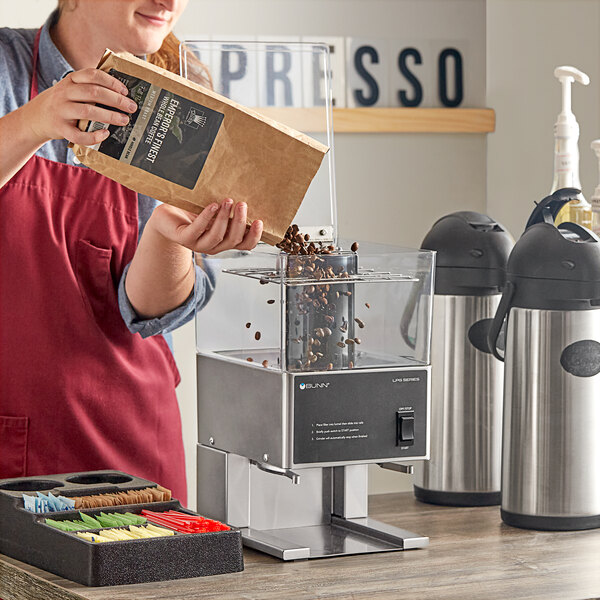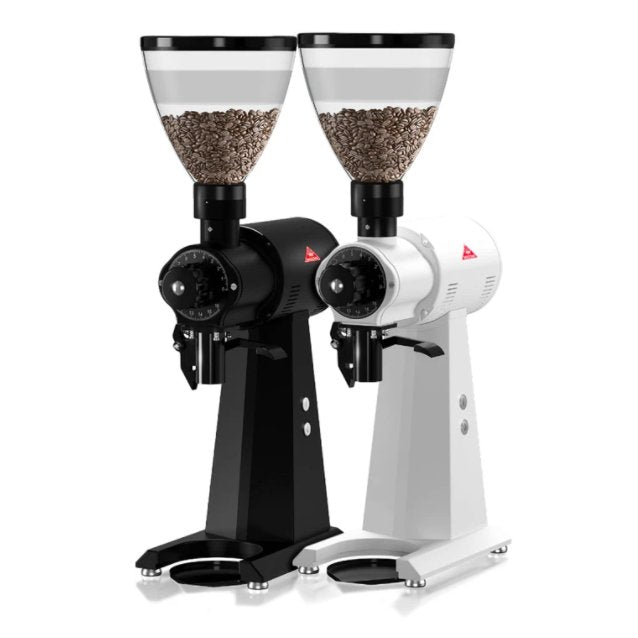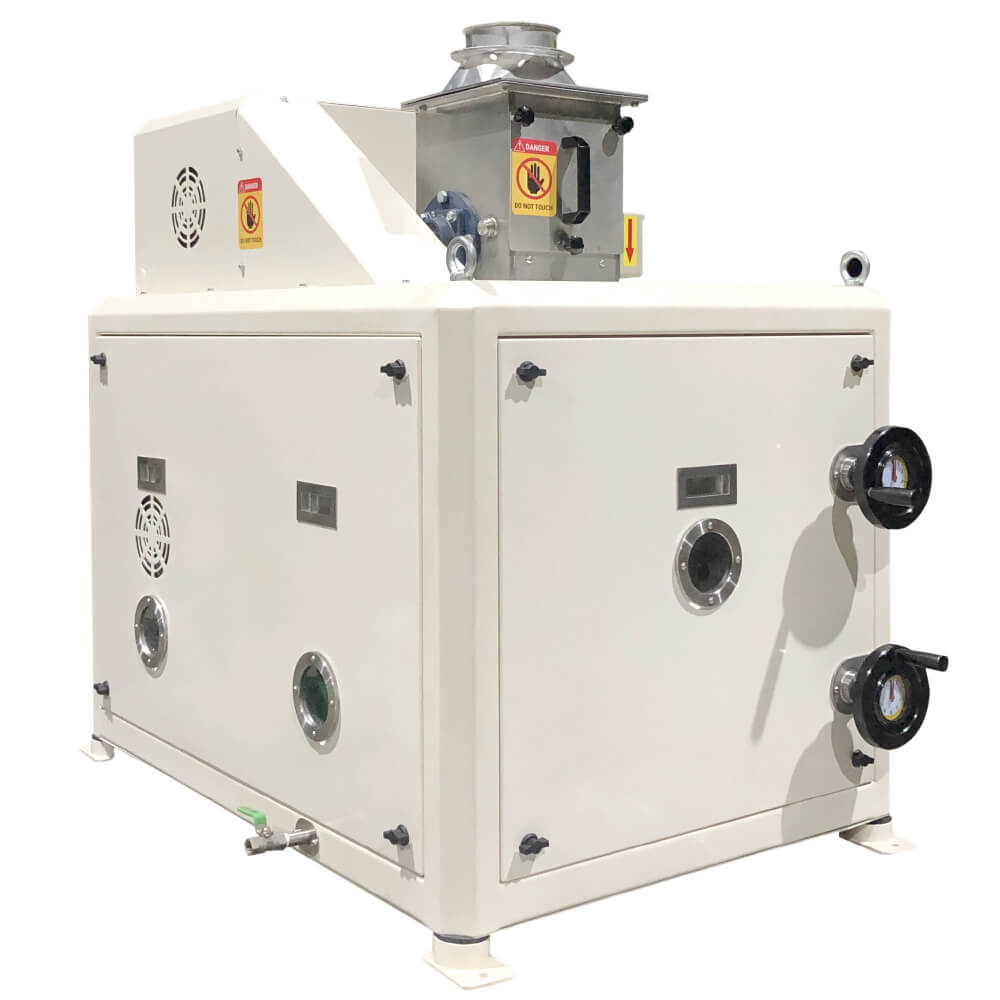Industrial Coffee Grinder: Pros, Cons, and Features to Consider
Industrial Coffee Grinder: Pros, Cons, and Features to Consider
Blog Article
How to Pick the Perfect Industrial Coffee Grinder for Your Business
Picking the suitable industrial coffee mill for your service is a multifaceted choice that requires mindful consideration of numerous vital factors. It is important to examine your specific grinding requirements, including the volume of coffee refined and the preferred work consistency, as these components directly influence flavor and client fulfillment. Additionally, recognizing the various kinds of mills offered can significantly affect your functional efficiency. As you browse these factors to consider, one should likewise consider the implications of spending plan and upkeep. What other aspects could make or damage your choice?
Assess Your Grinding Demands
When picking a commercial coffee grinder, one need to initially assess their grinding needs to guarantee ideal efficiency and uniformity. This preliminary evaluation involves understanding the volume of coffee to be processed daily, as well as the desired grind size for various brewing methods. A high-capacity grinder may be necessary for companies serving large quantities of coffee, while smaller operations might find a much more portable model sufficient.
Additionally, it is important to think about the kinds of coffee beans being made use of, as various beans might call for details grinding techniques to achieve the most effective flavor profile. For example, oily beans may require a mill created to handle such qualities without overheating or clumping.
Specialized coffee companies typically require precise grind sizes to enhance removal and taste, making it crucial to select a grinder that can provide uniform outcomes. Evaluating the offered room and electric requirements will assist in picking a grinder that fits effortlessly right into your operational process.
Understand Mill Types
Recognizing the different kinds of commercial coffee grinders is critical for making an informed option that satisfies particular operational demands. There are primarily two classifications of mills: blade mills and burr mills.
Blade mills utilize spinning blades to cut the coffee beans, resulting in an inconsistent grind size - Industrial Coffee Grinder. While they might be much more affordable, they are commonly not ideal for commercial applications where precision is vital
On the various other hand, burr mills give a more consistent grind by crushing the beans between 2 surfaces. They can be more classified right into flat burr and conelike burr grinders. Apartment burr grinders use a regular work size and are commonly preferred for coffee preparation, while conical burr grinders are functional and can handle a range of brew approaches, from coffee to French press.
When picking a mill, take into consideration the particular needs of your organization, including preferred work uniformity, production quantity, and the kinds of coffee beverages you intend to supply - Industrial Coffee Grinder. Each mill type has its benefits and constraints, so understanding these subtleties makes it possible for notified decision-making that lines up with functional objectives
Evaluate Grind Size Uniformity
Attaining grind size uniformity is crucial for generating high-grade coffee, as variants in fragment dimension can dramatically influence removal and flavor. When selecting an industrial coffee grinder, it is crucial to assess exactly how well the device maintains uniformity in grind dimension across various batches. Irregular work sizes can bring about unequal extraction, leading to a mug that may taste weak or extremely bitter.
To examine grind dimension consistency, consider mills with features such as flexible work settings and high-grade burrs. Burr mills, in particular, master producing consistent bit sizes contrasted to visit their website blade grinders. The product and form of the burrs play an important function, with stainless steel and ceramic options offering toughness and accuracy.

Take Into Consideration Production Capacity
In the hectic globe of coffee manufacturing, thinking about manufacturing ability is paramount for companies aiming to satisfy need without giving up top quality. The manufacturing capacity of an industrial coffee grinder directly influences a company's capability to meet orders effectively, handle stock, and react to fluctuating market trends.
When examining production capability, it is crucial to assess the grinder's output price, commonly gauged in pounds per hour. This measurement must align with your business's forecasted sales quantity and growth targets. A café with a high turn over might require a mill that can refine several hundred extra pounds daily, while a smaller sized operation could be adequate with a lower capacity model.
In addition, think about the sort of coffee being refined. Various beans and blends may impact grinding rate and effectiveness, requiring a grinder qualified of taking care of diverse manufacturing demands. It's additionally worth considering the mill's ability to maintain constant quality under high result conditions, as any variations can impact the last product.
Inevitably, picking a grinder that matches your organization's production capacity will certainly ensure you remain responsive and affordable to client assumptions.

Budget and Maintenance Factors
When examining the best commercial coffee upkeep, grinder and budget elements play a significant duty in the general decision-making procedure,. A preliminary financial investment in a high-grade mill can produce long-lasting advantages, however it's vital to establish a clear spending plan that straightens with your company's operational needs. Take into consideration both the acquisition cost and prospective operational prices, such as power intake and replacement components.
Industrial coffee grinders need regular maintenance to make sure optimal efficiency and durability. Evaluate the producer's suggestions for upkeep, including cleaning timetables and parts substitute, as these will certainly impact long-term operational prices.

Purchasing a mill that is durable yet very easy to preserve can conserve money gradually. While lower-priced choices may be alluring, they may incur higher maintenance expenses and decreased performance. Inevitably, stabilizing initial prices with long-term maintenance and operational performance will guide you to the very best option for your service's coffee grinding needs.
Final Thought
Picking the excellent industrial coffee mill necessitates a thorough evaluation of grinding needs, grinder kinds, grind size consistency, production capability, and budgetary factors to consider. An appropriate grinder not just boosts the high quality of the coffee helpful hints produced yet additionally adds to the overall success and earnings of the venture.
Specialized coffee services often demand exact work sizes to enhance extraction and flavor, making it essential to pick a mill that can deliver uniform results. Flat burr grinders provide a constant work dimension and are commonly favored for espresso preparation, while conelike burr grinders are flexible and can manage an array of brew techniques, from espresso to French press.
When picking a commercial coffee mill, it is vital to review just how well the equipment maintains uniformity in work size across different batches. Burr mills, in particular, stand out in creating uniform bit sizes contrasted to blade mills.Selecting the excellent commercial coffee mill necessitates a thorough evaluation of grinding needs, mill types, grind size consistency, manufacturing capability, and budgetary factors to consider.
Report this page